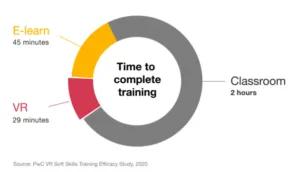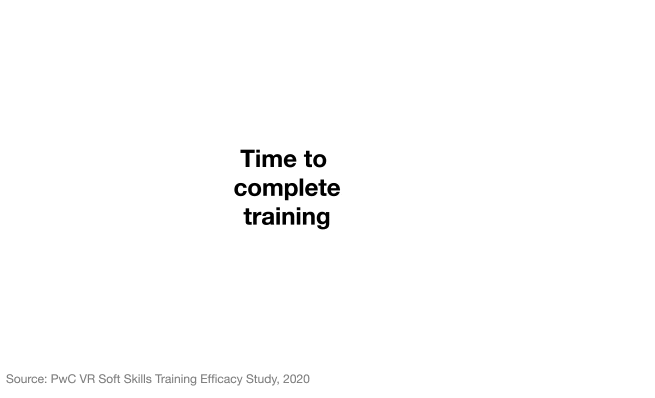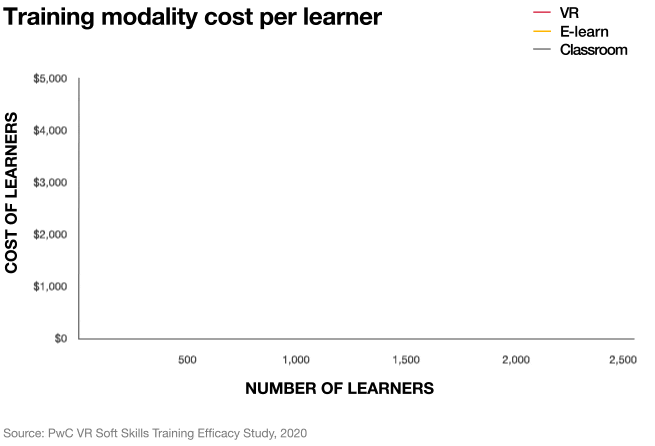With all the noticeable clamor these days for virtual reality, I felt it was the right opportunity to highlight some of the findings of a recent survey on VR’s impact on education. Designed with diversity and inclusion top of mind, Future Workplace and Mursion collaborated to publish a VR adoption survey of more than 305 learning and development leaders in large organizations.

Of those leaders responding, 35% were currently deploying VR in training systems, while another 37% hoped to explore VR within two years. The survey’s findings are succinct:
“Our findings revealed that personalized, immersive virtual reality simulations are moving out in front when it comes to closing soft skills gaps. They are especially beneficial in business-critical areas such as team management and collaboration; sales and customer service; and diversity, equity, and inclusion.”
Expectedly, eight out of ten leaders surveyed envisioned “role playing” actual workplace situations as the best training approach for VR. And—“given more budget”—VR ranked in the top three “wish list” investments for fifty one percent of survey respondents. The survey also suggested that “VR creates a wholesale shift in time to mastery— months to weeks, weeks to hours…” The survey’s authors added: “Looking across the data, it’s clear that bringing VR into the training mix accelerates time to impact”. The full report can be downloaded here.
The VR adoption survey report also included two case studies. In the first case study, HR Block (a tax preparation company) developed some personalized VR “onboarding simulations” for late-season hires. According to the report, “the VR simulations were designed to strengthen call center agents’ on-the-job confidence, empathy towards clients, and core competencies around issue resolution”. The results were striking, given just two VR training sessions:
- performance was equivalent to three month’s on the job training.
- 4,119 hours of “average handling time” was reclaimed
- average “hold time” was reduced by 55.8 seconds and “talk time” by 17.31 seconds
- issue resolution by increased by 3%
- internal scores were boosted for both employee confidence and customer satisfaction
A second cited case study involved T-Mobile, which ran leaders through VR change management simulations. In these scenarios, learners were asked to attain ‘buy-in’ from a virtual employee who is influential, but largely resistant to change. In the end, nearly 90% of employees demonstrated competency in handling challenging change management situations.
I also spent considerable time scouring the references and research annotations underlying this report and found some other interesting insights. For example, the Mursion survey cited these instructive results about time to training and cost per learner from a 2020 PwC study:
What these data suggest is that VR learning can be much more cost-effective and impactful at scale. All taken together, this recent Mursion survey is instructive, but riddled with the potential, if not the likelihood, of steep confirmation bias. Reading between the lines we can also infer from the survey’s leading question, “given more budget…“, that VR is still not a critical enough investment to warrant a reasonable foothold in traditional, existing, or recurring budgets. Still, the case studies and the PwC data are newsworthy. –Len Scrogan



